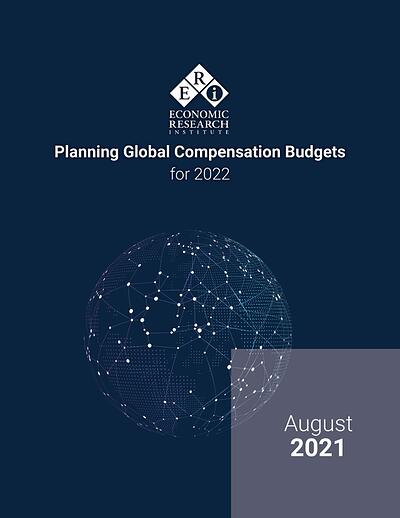Compensation professionals are responsible for ensuring the pay integrity of an organization – making sure that pay is fair, equitable, and consistent across employee populations, keeping the organization free of legal problems, and maintaining a reputation as a good place to work. They know the importance of studying the market in light of the current employee population, which can reveal pay inequities, trends in salary movement, and emerging hot jobs and also provide insights that an organization needs to stay competitive. In order to accomplish this, employee data must be reviewed and analyzed on a regular basis.
Compensation Benchmarking for Small Organizations
For small organizations, using an Excel spreadsheet may serve as an adequate tool to support the review and analysis of employee compensation data. It can be simple, easy, and cost effective if the employee population is small and relatively static. The process may look something like this:
- A snapshot of employee data as of a specific date in time is extracted from the HR information system and downloaded into an Excel spreadsheet. The data extract generally consists of employee identifiers, such as name and ID number, job code, salary, date of hire, gender identity, age, ethnicity, years of service, department, and manager name – any relevant data needed to perform fair pay, equity, and compensation analyses. (If the information is not needed, it should not be included.)
- The relevant data are initially reviewed and analyzed by applying calculations to determine such metrics as position in grade range, compa ratio, and salary compression, as well evaluations of fair pay and adverse impact. The compensation team performs this high-level overview.
- Anecdotal data, such as comments regarding performance, potential, difficulty recruiting, or succession planning, are included as notes, with input from the manager, talent acquisition team, and any other sources.
- Salary survey data are combined to show market rates, projected increases, and position. The survey data are manually researched, extracted, and added to the spreadsheet.
- The compensation team spends additional time with the data, analyzing, reviewing, comparing, and making observations and recommendations.
- Since the team does not operate in a vacuum, the data are shared with managers and leaders to review the initial recommendations and provide additional input. This part of the process is accomplished by dividing the original workbook into separate smaller workbooks sorted by department, cost center, manager, and/or senior leader. A timeline is communicated for completion of the review and salary adjustment suggestions, along with budget constraints.
- The individual spreadsheets are returned and compiled into one master workbook, where compensation can evaluate the big picture impact of the suggested changes, overall costs, and budget impact and then follow up with managers regarding any outliers.
- The suggested changes are presented to finance, budget, and senior leadership for final review and approval.
- Once approved, the changes are communicated for HRIS and payroll system implementation. Managers are apprised of the final approvals. Letters detailing the changes are created and communicated to the affected employees, and the cycle is closed.
- The compensation team may take the time to assess and document the process for the next cycle. However, all too often, time does not allow for this proactive evaluation.
Compensation Benchmarking for Large Organizations
This straightforward and simple process could work for large organizations as well; given budget and capital constraints, it is often the process applied. However, large organizations present a challenge to using spreadsheets because of the sheer volume of data alone. In the time it takes to make an initial review, the data may have already changed significantly. Add to that the dynamic nature of the data due to manager and department modifications, minimum wage changes, retirements, leaves of absence, and rehires. What’s more, employees have left the organization, new employees have been on boarded (providing different comparators of salary and experience), and employees have been promoted, demoted, received salary adjustments and raises, taken on new assignments, adjusted their working hours, etc. The data can quickly become outdated, leaving frustrated managers to review old or obsolete data, making observations and decisions irrelevant. Anyone who has used an Excel spreadsheet to analyze data under these circumstances can attest to the headaches that can accompany that task. Maintenance of the spreadsheet also presents a challenge as formulas may need to be changed/updated or metrics added. Too much time and energy can be focused on managing the spreadsheet itself instead of analyzing the data. It can be difficult to own the technical integrity of the workbook and step away to review the data holistically.
Compensation benchmarking software provides an efficient alternative to in-house spreadsheets, making compensation management easier and more effective for large organizations with robust data needs. A system dedicated to salary planning (allowing what-if analyses, regression analyses, trending of data, and other insights) with accurate, up-to-date data that reflect the current state is vital to making critical and possibly costly compensation decisions that could have long-term implications to the organization’s reputation, compensation strategy, and the bottom line. Compensation benchmarking software, such as ERI’s Assessor Platform, provides relevant market data for analyses and comparison, projected salary growth, and projected merit increase budgets across industries, jobs, and similar organizations. The salary benchmarking software has the capacity for multiple input and collaboration at the same time. Additionally, real-time analyses and budget implications make it an effective tool for reviewing compensation decisions. The IT department maintains responsibility for the compensation software system, including any updates, enhancements, or special reporting, leaving compensation free to focus on their strengths of analyses and observations.



